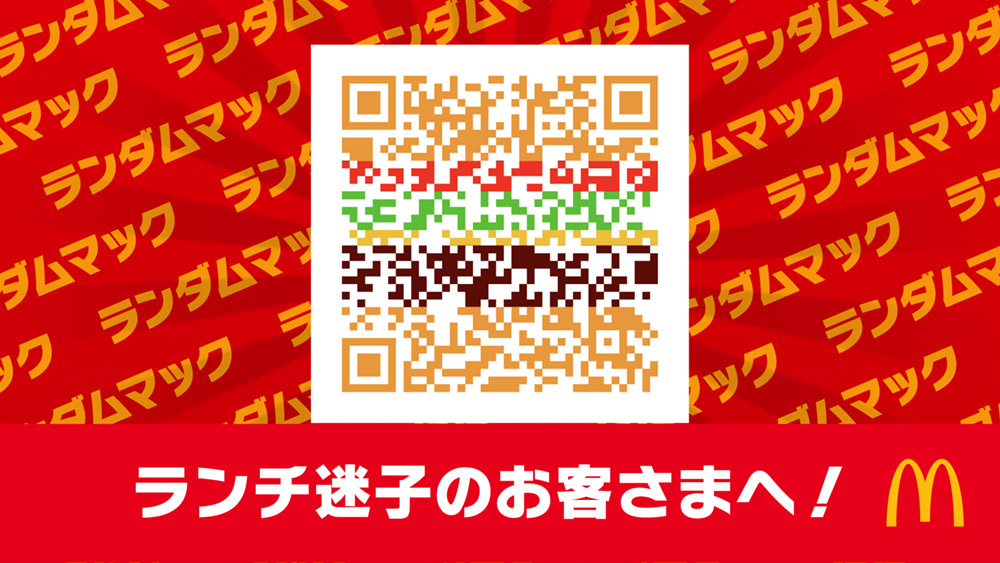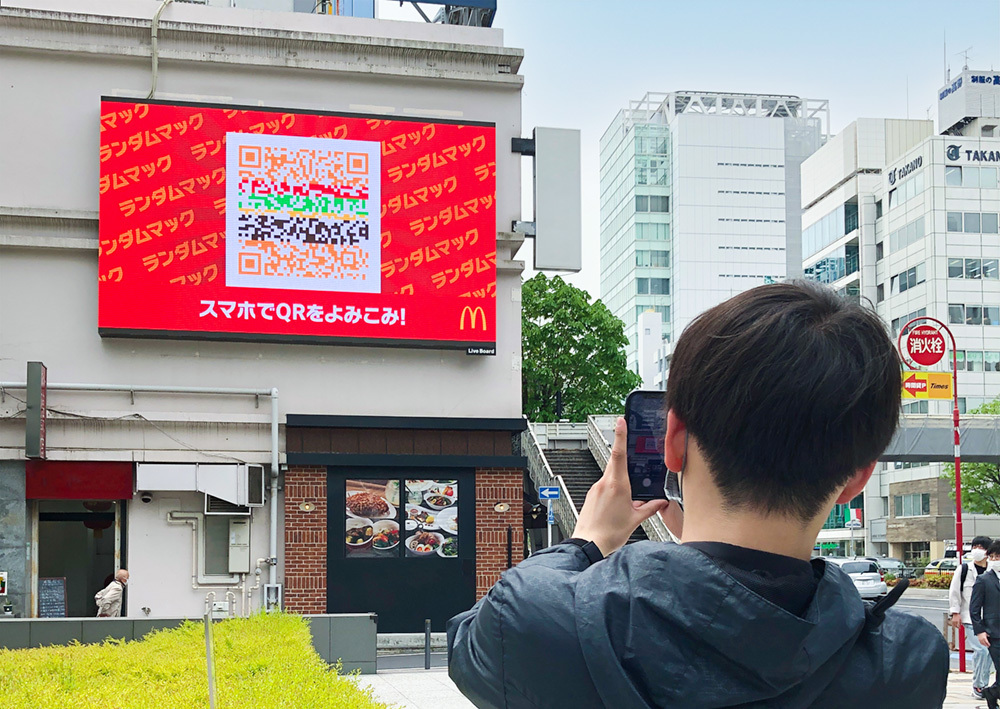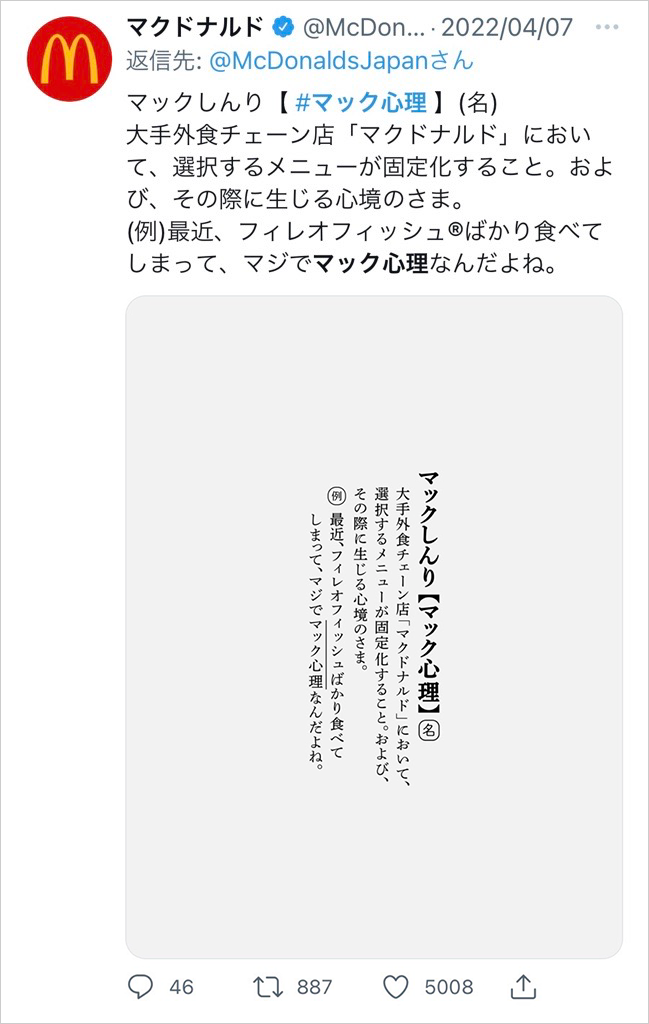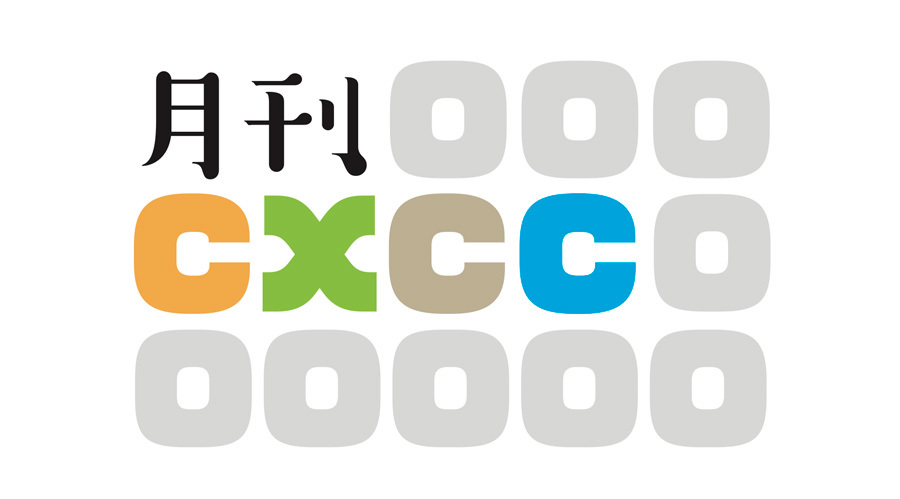CX (Customer Experience) continues to evolve daily.
How can Dentsu Inc.'s creative team contribute to the CX domain, now demanded in every scenario?
To explore this potential, members of Dentsu Inc.'s CX specialist unit, the "CXCC" (Customer Experience Creative Center), share insights on CX and creativity in this series. This is "Monthly CX" ( For more on Monthly CX, click here ).
This time, we present a case study from "McDonald's" (hereafter: Mac). How was "Random Mac," an experience where customers encounter new menu items, born? We spoke with Tamami Oobuchi, who approached the project with a CX creative perspective.
Ms. Ōbuchi, born in the late 1990s, is part of Generation Z. She explains that this project specifically sought "ideas unique to Gen Z." We explore the success factors of the "Random Mac" project, which brought together ideas from the Gen Z team.
*CX Creative refers to... using creative power to generate valuable new customer experiences. It also denotes the initiatives themselves.
【Profile of Tamami Oobuchi】
Dentsu Inc.
Customer Experience Creative Center
Art Director / UIUX Designer
After working at a design boutique, joined Dentsu Inc. in a digital creative role. Enjoys graphic work involving information organization and compilation, and finds excitement in unraveling complex phenomena through the bright approach of design. Recently, frequently handles UIUX development for websites and apps, as well as SNS planning and art direction for campaigns.
【"Random Mac Project" and Other Creative Members】
Kojiro Kizu (Creative Planning Division 4)・Kei Konishi (Creative Planning Division 1)・Ryohei Yatsuzaki (Creative Planning Division 2)・Kentaro Tsuji (Creative Planning Division 4)・Marina Kobayashi (Creative Planning Division 1)
The insight that despite having over 30 types of hamburgers, people always end up ordering the same thing
Monthly CX: What kind of project was "Random Mac"?
Ōbuchi: It was a project where scanning QR codes displayed in ads or elsewhere would show single items or set menus, like "Hot Apple Pie" or "Egg Cheese Burger Set." This helped customers choose menu items and discover things they hadn't tried before.
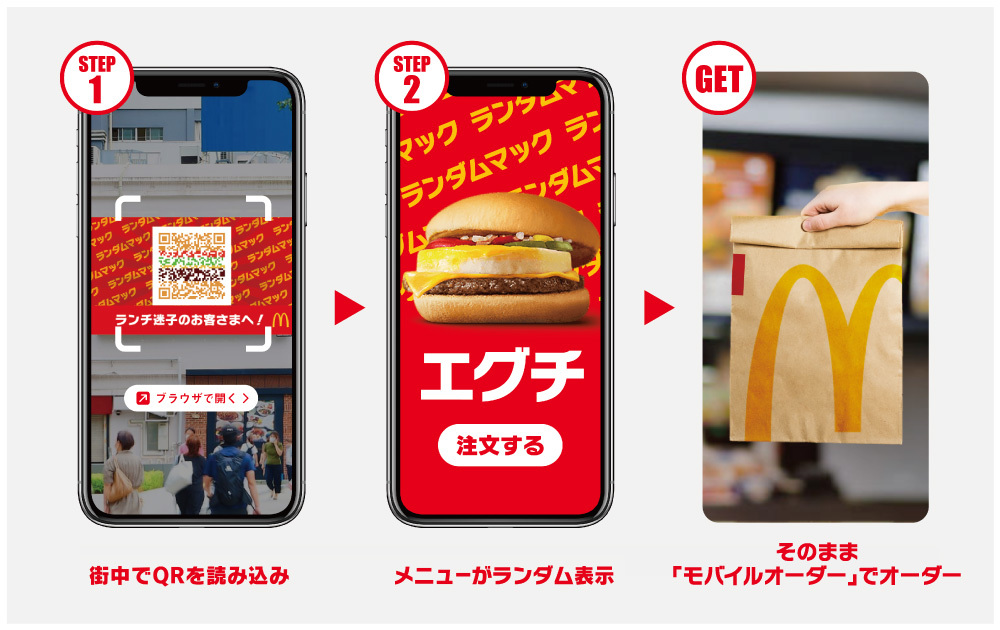
A new ordering experience step to encounter unexpected menu items
Ōbuchi: We also took on new challenges with the advertising for this project. During the campaign period, we displayed it on outdoor "LIVE BOARD" advertisements (hereafter: Live Boards) primarily in the Tokyo metropolitan area and regional cities. We also posted on Twitter with moving QR codes. We produced 176 different outdoor advertisement videos, which were displayed based on the region (like Tokyo or Kyushu), time of day, day of the week, weather, and temperature.
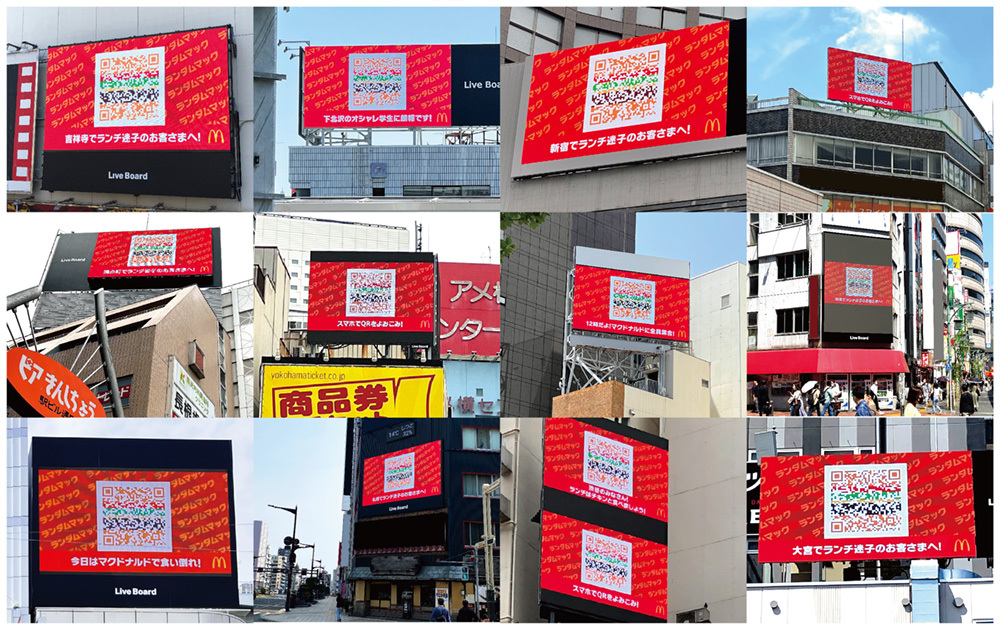
Random Mac was rolled out across 53 outdoor advertising locations nationwide
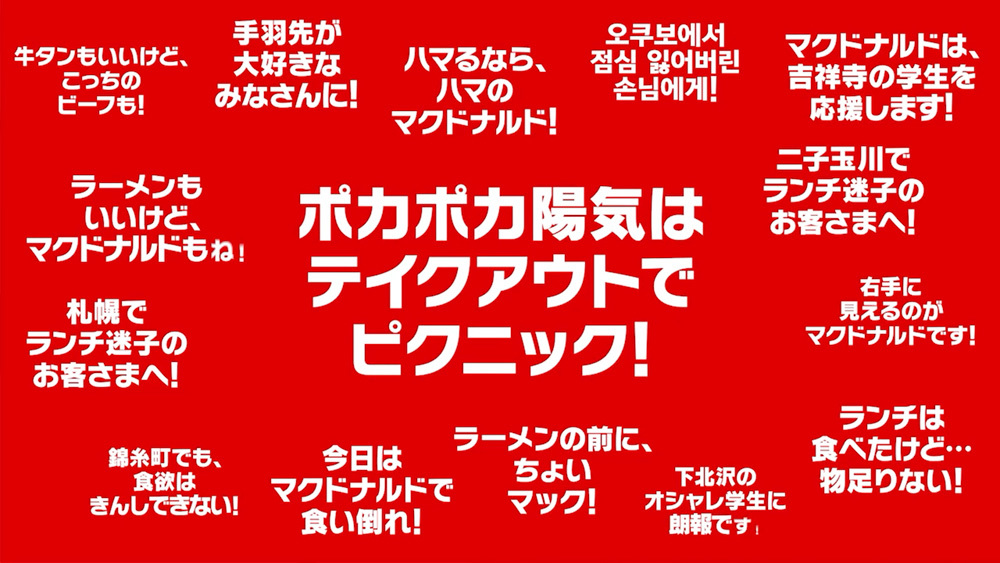
Outdoor ad messages varied based on time, day of the week, weather, and temperature
Monthly CX: This is a very unique project, including its execution.
Ōbuchi: This project actually originated from an internal competition among our young creative teams. The client's request was to promote usage of "Mobile Order," a service within their official app that handles everything from ordering to payment. They asked us to come up with a buzzworthy initiative that would make people want to try "Mobile Order."
Additionally, the condition was to use outdoor advertising live boards, requiring a CX design appealing enough for use during lunchtime at downtown stores. They also specifically asked for "ideas unique to Gen Z," expecting something innovative. This gave us a lot of freedom and a very open environment for brainstorming.
Monthly CX: How did the "Random Mac" idea emerge from this?
Ōbuchi: During conversations with our team members, all in their early to late twenties including myself, the topic came up about how we always end up eating the same things and struggle to be adventurous. Come to think of it, I myself loved cheeseburgers since elementary school and always ordered the same thing. Even though McDonald's has over 30 different burgers, I always ordered the same one. I thought there must be a hidden need here.
Monthly CX: It's true—having so many choices can actually make it harder to try something new. That kind of routine does seem to exist.
Ōbuchi: Exactly. When I researched this on social media, I was surprised to find many people shared this same frustration—it revealed a genuine insight. We defined this state within our team as "McPsychology." It just came up casually in conversation, but when I mentioned it to friends, they immediately responded with "I totally get that!"—showing strong resonance.
Monthly CX: I think the term "McPsychology" perfectly captures consumer insights.
Ōbuchi: It was great that we defined a term everyone could relate to. We used "McPsychology" in our presentation to clients, sharing our own experiences, and they understood it instantly. That's precisely why figuring out how to respond to such insights was crucial.
Monthly CX: How did the team shape the idea?
Ōbuchi: Within the team, we discussed, "Let's not just create buzz; let's ensure our ideas have the strength to genuinely get customers to use 'Mobile Order.'" As a user myself, I find McDonald's "Mobile Order" incredibly convenient. So, we decided to focus not just on making people aware of the service, but on embedding a CX element within the advertising campaign that truly conveys that convenience.
While the basic approach was using a QR code to transition to 'Mobile Order,' we repeatedly explored how to simplify it and add a game-like element. This led us to the final form: a QR code that moves.
Invented a dynamic QR code. Scanning it reveals an unexpected menu (excerpt from campaign video)
*This campaign has ended.
Ōbuchi: During brainstorming within the team, we focused on how we could combine our own ideas with someone else's. It wasn't just one person's idea; it was something born from the team's ideas building upon each other.
In our usual team, projects often progress according to roles defined by job titles. But at Random Mac, everyone contributed ideas without being constrained by their positions. We felt this deep dive into discussions—covering planning, design, and even copy—was something unique to a young team.
During the presentation, the client resonated with it, calling it "a worldwide idea that would be considered interesting not just in Japan, but globally," which allowed us to move forward with the project.
There was a demand for a service that breaks routine by introducing randomness.
Monthly CX: How was the response to "Random Mac"?
Ōbuchi: Throughout the campaign period, we reached 28.01 million people, with 2.07 million participants—a tremendous response. Many users joined via outdoor live boards, but we especially saw diverse user voices on social media.
Ōbuchi: Before launching the service, we posted a teaser on McDonald's official Twitter saying, "Do you tend to order the same menu items every time...?" It received over 7,000 retweets and over 90,000 likes (as of April 7, 2022), with an overwhelming number of people responding. It was gratifying to realize everyone was thinking the same thing.
Monthly CX: I thought it was a powerful, meta-level post—not just an external suggestion about "tendency to order the same," but the official account saying it.
Ōbuchi: While we handled social media too, we decided this post absolutely had to be our first. Looking at the reactions, many people took it positively, saying things like "They really get us." This post even sparked a friendly competition among users, with people sharing things like "I always get the Chicken Filet" or "I only ever get Big Macs." I think we succeeded in creating communication that made users want to speak up.
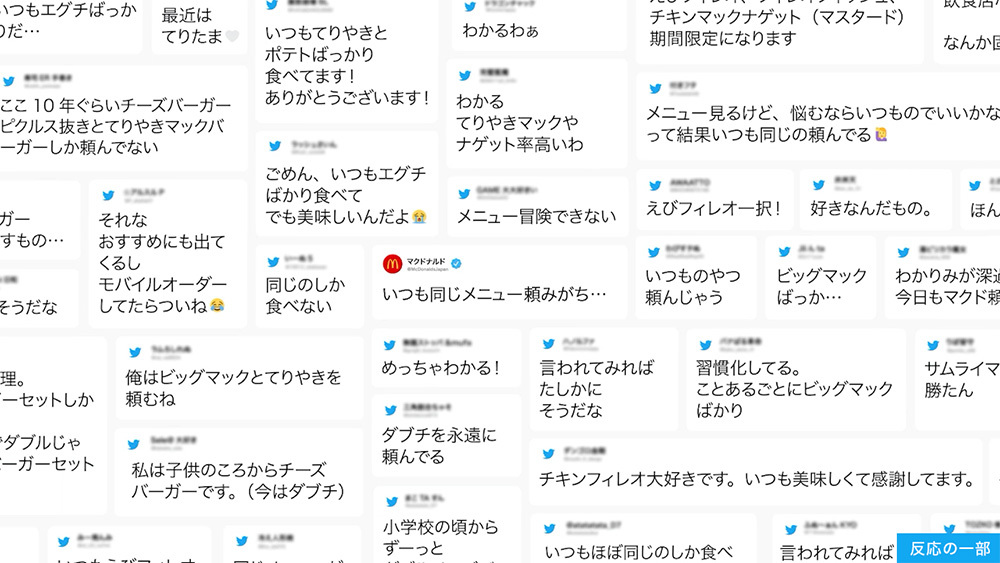
Many users reacted with comments to the official account's post
Monthly CX: We've seen a rise in content leveraging randomness lately, like campaigns where destinations are chosen by lottery. How do you analyze why "random" is gaining such appreciation?
Ōbuchi: Given the pandemic, I think it's because people are seeking something to break the monotony of predictable, routine days. The rise of music streaming services and dating apps in recent years, where recommendation features with random elements are highly valued, also shows a strong desire among younger generations to encounter the unexpected.
The project led by our Gen Z-centered team arriving at "Random Mac" might have stemmed from that very sentiment.
Monthly CX: Do you personally use services with random elements often, Mr. Ohbuchi?
Ōbuchi: Not services specifically, but I do value encounters like books recommended by others, music playing in shops, or traveling without a set itinerary. Observing my peers, I sense a shared desire for those accidental encounters with things they wouldn't normally choose themselves. I think Gen Z is a generation that enjoys casually discovering new connections, much like the feeling of randomly stumbling upon a new song.
I'd always just eaten cheeseburgers before, but with this "Random Mac," I tried the "Samurai Mac" for the first time and was amazed by how delicious it was (laughs). It's not necessarily true that only things you struggle to choose become memorable. I felt that what's important is how you create that first spark of liking when you try something spontaneously, and how you stage that experience.
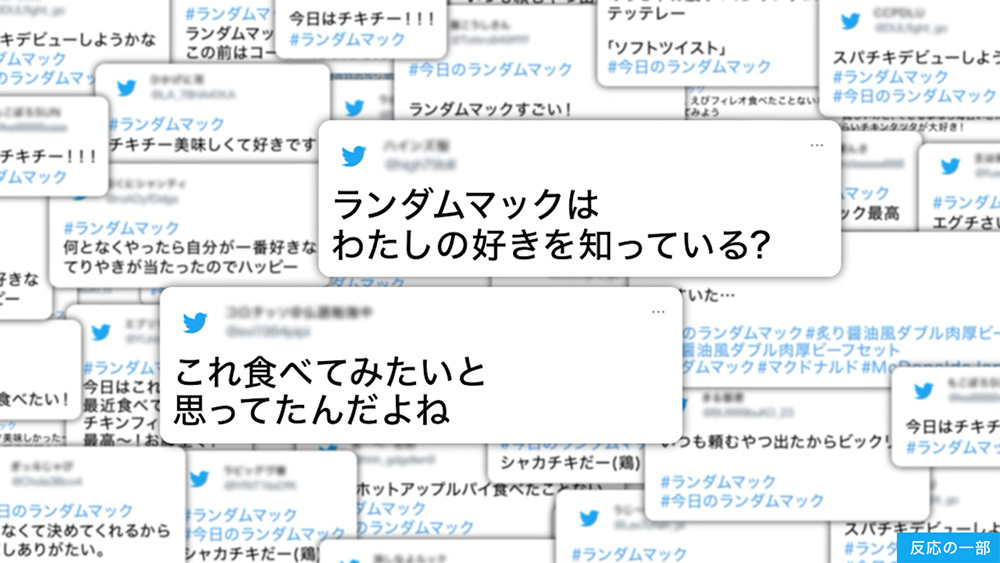
Many users tweeted the menu items displayed by Random Mac
An "editing" approach to convey everyday life in a new narrative style
Monthly CX: This project seems like a highly catchy and successful case study in customer experience creation. Could you share what you focused on in CX creative, Mr. Oobuchi?
Ōbuchi: I think it all comes down to conveying ideas through new stories. Organizing information and designing experiences. By focusing intently on that process, I feel we successfully translated it into CX. Throughout the project, we kept the word "compilation" close to our hearts as a guiding principle.
Monthly CX: "Compilation," you say. Could you elaborate?
Ōbuchi: In my interpretation, "compilation" means "arranging and collaging existing elements from a unique perspective to weave a new story." I believe the key approach is taking ideas derived from everyday life and crafting them into "new experiences" while preserving the brand's essence. I feel that "Random Mac" succeeded in becoming a project users enjoyed precisely because it valued this method of communication.
Monthly CX: Thank you. Finally, could you share what you'd like to challenge yourself with next?
Ōbuchi: This project sparked a new enjoyment for me in creating serendipitous encounters. I want to explore that experience in other projects too. Beyond just being a device for a single moment, my challenge is to establish something that will be loved and endure in the world. I hope "Random Mac" doesn't just stay a one-off project, but becomes an experience deeply rooted in the brand for the long term.
*QR Code® is a registered trademark of Denso Wave Incorporated.
(Editor's Note)
In the 12th issue of Monthly CX, we introduced the "Random Mac" project, implemented in April 2022, which helps customers discover new menu items at McDonald's.
Mr. Oobuchi's analysis—that in today's world of predictable routines, services with an element of randomness resonated precisely because people crave opportunities to break out of the monotony—offers a significant insight. The fact that this initiative originated from members centered around Generation Z also makes it a case study emblematic of our times. As Mr. Oobuchi describes through his "curation" approach, it seems various perspectives are inherent in CX creativity.
This interview was conducted in collaboration with 'CX Creative Studio note' ( learn more about CX Creative Studio note here ). We are also working with Dentsu Digital Inc.'s CX Creative team, alongside the Dentsu CXCC team, to collect and introduce a broader range of case studies. If you're interested, please check it out as well.
If you have requests for future case studies or themes, please send a message to the Monthly CX Editorial Department via the contact page below. Thank you for your continued readership.



